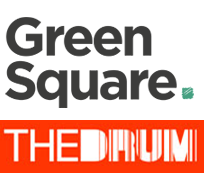22nd April 2015
This month I wanted to return to two old friends we have written about several times before – St Ives Group and the Mission Group.
St Ives, you may recall, was originally a commercial printer founded in 1964 which grew huge in the 1980s on the back of web printing and the newspaper and magazine boom. But unlike many of the printing giants of yesteryear, St Ives diversified away from print and has prospered while many of its fellow printers fell by the wayside.
Crucially, St Ives diversified into marketing services, an industry with synergies with commercial printing, so the company had experience to draw on when it first dipped its toes into the marcomms waters back in the early 2000s. Its first purchase in the field was point-of-sale specialist SP Group in 2004. A couple of years later it moved into large-scale print (ie posters for outdoor campaigns) and procurement, and in 2010 it acquired the direct marketing and data specialist Occam. The next year it set up a digital signage division.
Today traditional print is just a small part of of its business – the magazine web offset printing division was sold in 2011. As well as marketing services (which now account for 46 per cent of all profits), the group also offers procurement, consultancy, field marketing, point-of-sale, compliance monitoring, market research, web design, search, e-commerce, healthcare comms and more.
It’s a remarkable transformation. Interestingly, St Ives has long been drawing on the marcomms industry for its leadership talent – Matt Armitage, appointed CEO last August, originally worked for Omnicom (at the DM agency Tequila) before joining St Ives in 2007, and there are plenty of others in the senior team.
Over the past couple of years, St Ives’ strategy has concentrated on building an international footprint and creating a presence in digital. Late last month it ticked both these boxes with the acquisition – its first major overseas buy – of Solstice Consulting, a US-based digital consultancy which is also known as Solstice Mobile.
St Ives paid £24.7m for the Chicago-headquartered firm, comprising £20m in cash and approximately 2.6 million shares in St Ives for the remaining £4.7m (valuing those shares at around 180 pence per share, which are currently trading between 170 pence and 180 pence).
A further £25.3m may be payable, split between 80 per cent in cash and 20 per cent in St Ives shares, dependent on the profit performance of Solstice between now and 2017.
St Ives said the acquisition will be “earnings accretive” in the current financial year on an underlying basis. Solstice generated ‘adjusted’ earnings before interest, tax, depreciation and amortisation of £2.7m in 2014 on revenue of £16.5m, according to the acquirers’ statement.
Solstice specialises in a field – mobile and digital product design and engineering services – that is going to become incredibly important over the next few years. It also gives the acquirer a foothold in mobile, an area it wasn’t especially strong in before. Solstice also consults on strategy and innovation, as well as customer-experience design and digital product development, and has helped develop apps that allowed customers to rent and order movies with smartphones and tablets – a huge growth market and one which will continue to grow for the foreseeable future.
And of course, Solstice operates out of offices in New York and Buenos Aires as well as Chicago, giving St Ives a valuable bridgehead in both halves of the Americas. It would seem that there should be a good cultural and business fit between the two, with Solstice’s existing management team, including founder and chief executive J Schwan, remaining with the business.
Another company we’ve always followed, Mission Marketing Group, whose agencies include Story, Bray Leino, April Six and Splash, has also been busy. First of all, last month it posted a pre-tax profit of £5.4m, up from £3.2m for 2013 on the back of revenue of £125.5m (£124.1m for prior year). Exceptional costs of over £2m, caused by restructuring its offer last year, did not recur.
The aforementioned restructuring has bought cost savings, and more will doubtless come from the merger of two of the group’s agencies, Balloon Dog and Big Communications. But there are other reasons for the merger, and they’re strategic and about scale (something the big-paying clients are increasingly demanding these days).
Balloon Dog employed 80 staff and worked for clients including Pret A Manger, Barclays and Mazda; Big Communications also had 80 employees and worked for Quorn, Jaguar Land Rover and builders’ merchant Jewson. The new entity, to be called Big Dog, will be based in London, Leicester, Norwich and Birmingham and will offer the kind of full-service agency model that seems to be coming back into fashion, perhaps because a certain kind of client prefers a “one-stop shop” solution, rather than spreading tasks across several agencies (and of course it makes sense to have one centre of accountability rather than several).
By combining the agility of an indie or a start-up with the potential scale of a network, the new Big Dog will be able to offer clients advertising, design, digital, branding, direct marketing, social media, planning and strategy and PR, all under one roof.
